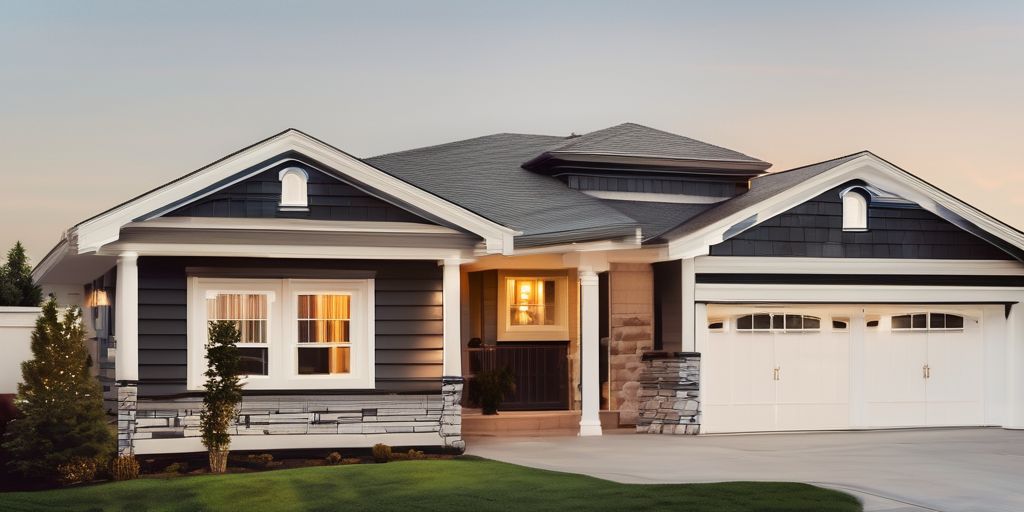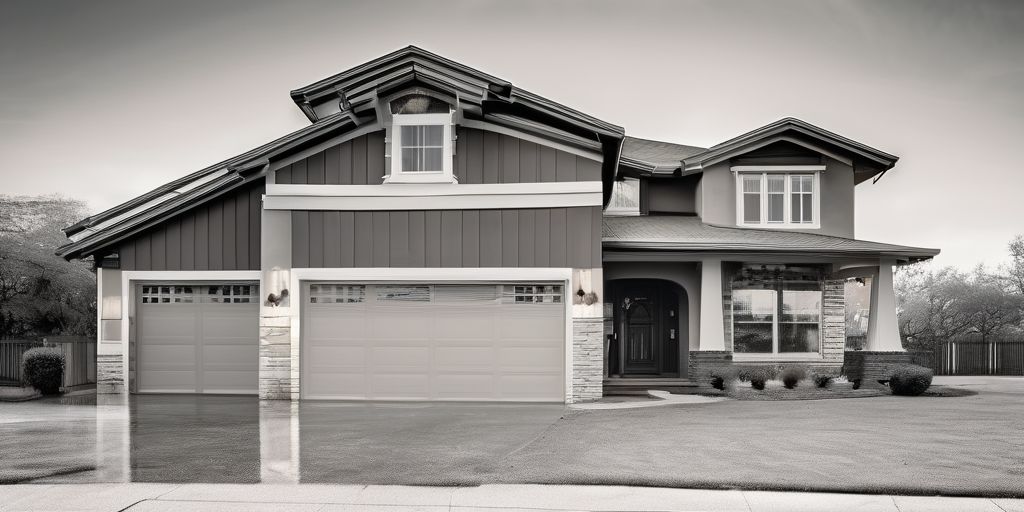Spray painting is a great way to give new life to old items or add a splash of color to any project. However, getting an even and durable finish can be tricky if you don’t know the right techniques. This guide will walk you through the steps to achieve a professional-looking spray paint job, from preparing the surface to applying the final clear coat.
Key Takeaways
- Always prepare the surface by cleaning, sanding, and priming to ensure the paint adheres well.
- Choose the right type of spray paint and finish for your project, considering factors like material and environment.
- Apply thin, even coats of paint using sweeping motions and maintain the proper distance from the surface.
- Finish with a clear coat to protect the paint and give it a glossy, professional look.
- Avoid common mistakes like applying too much paint at once or not allowing enough drying time between coats.
Preparing the Surface for Spray Painting
Cleaning and Sanding
Before you even start spraying, it’s important to make sure that the surface you’re working on is clean and smooth. Any dirt, dust, or imperfections will show through the paint, ruining the final result. Use a cleaner specifically designed for the type of surface you’re painting (e.g. wood cleaner for wood surfaces) and allow it to dry completely. Next, lightly sand the surface to smooth out any rough spots. If you’re painting a surface that has never been painted before or is particularly porous, it’s a good idea to use a primer. This will help the paint adhere better and provide a more even base for the final coat.
Priming the Surface
Priming is a crucial step in spray painting. It helps the paint stick better and makes the final color look more vibrant. Choose a primer that is suitable for the material you are painting. Apply the primer in thin, even coats and let it dry completely before moving on to the next step.
Masking Off Areas
To achieve a polished finish when spray painting, it’s essential to mask off areas that you don’t want to be painted. Use painter’s tape and plastic sheeting to cover these areas. This will protect them from overspray and ensure clean, sharp lines. Make sure the tape is firmly pressed down to prevent paint from seeping underneath.
Choosing the Right Spray Paint
Selecting the right spray paint is crucial for achieving a smooth and durable finish. Here are some tips to help you make the best choice for your project.
Understanding Different Paint Types
There are various types of spray paints available, each designed for specific surfaces and uses. Choosing the right type of paint is essential. For example, some paints are formulated specifically for metal surfaces, ensuring durability and proper adhesion. Always read the label to understand the paint’s intended use.
Selecting the Appropriate Finish
Spray paints come in different finishes, such as matte, gloss, and satin. The finish you choose can significantly impact the final look of your project. A gloss finish, for instance, provides a shiny and reflective surface, while a matte finish offers a more subdued appearance. Consider the aesthetic you want to achieve when selecting your paint finish.
Considering Environmental Factors
Environmental factors like temperature and humidity can affect the outcome of your spray painting project. It’s important to spray paint in a well-ventilated area and under suitable weather conditions. High humidity can cause the paint to dry slower, leading to an uneven finish. On the other hand, extremely hot or cold temperatures can affect the paint’s adhesion and durability.
Choosing the right spray paint and understanding the environmental factors can make a significant difference in the quality of your project. Take the time to select the appropriate paint and finish for the best results
Applying Thin, Even Coats
When spray painting, it’s crucial to apply thin, even coats to achieve a smooth finish. Avoid thick coats to prevent drips and an uneven look. Here are some tips to help you get it right:
Proper Distance and Angle
Hold the spray can about 8-10 inches away from the surface. This distance helps you apply the paint evenly without it becoming runny or too dry. Keep the can at a consistent angle to ensure uniform coverage.
Sweeping Motions
Use sweeping motions to apply the paint. Start each stroke before you hit the surface and continue past the edge. Overlap each pass slightly to make sure you cover the entire area. This technique helps you avoid thick coats and ensures a smooth finish.
Drying Time Between Coats
Allow adequate drying time between coats. Follow the manufacturer’s recommended drying time to avoid smudging or smearing the paint. This step is essential for proper adhesion and a durable finish.
Remember, patience is key. Rushing the process can lead to a less-than-perfect result. Take your time and let each coat dry completely before applying the next one.
Finishing with a Clear Coat
Benefits of a Clear Coat
Applying a clear coat over your spray paint offers several advantages:
- Protection: It shields the paint from scratches, UV rays, and other environmental factors.
- Enhanced Appearance: A clear coat can give your project a glossy, professional finish.
- Durability: It helps maintain the paint job for a longer period.
Application Techniques
To achieve the best results, follow these steps:
- Preparation: Ensure the painted surface is completely dry before applying the clear coat.
- Light Coats: Apply thin, even layers to avoid drips and runs.
- Drying Time: Allow adequate drying time between coats, as recommended by the manufacturer.
- Sanding: If necessary, lightly sand between coats with fine-grit sandpaper to smooth out any imperfections.
Drying and Curing Time
Proper drying and curing are crucial for a durable finish:
- Follow the manufacturer’s instructions for drying times.
- Typically, a clear coat needs at least 24 hours to dry completely.
- For the best results, allow the clear coat to cure for several days before using the painted item.
Remember, applying too much paint at once can lead to an uneven finish. Always use light, even coats and be patient with drying times.
By following these tips, you can achieve a professional-looking, durable finish on your spray-painted projects.
Advanced Techniques for a Professional Finish
Using Stencils and Masks
Stencils and masks can help you create intricate designs with ease. They allow for precise patterns and can be reused for multiple projects. To use them effectively:
- Secure the stencil or mask firmly to the surface.
- Apply light, even coats of paint.
- Remove the stencil carefully to avoid smudging.
Creating Ombre Effects
An ombre effect can add a stylish gradient to your project. To achieve this:
- Choose two or more colors that blend well together.
- Start with the lightest color at the top.
- Gradually blend in the darker colors as you move down.
- Use sweeping motions to ensure a smooth transition.
Layering Colors
Layering colors can give your project depth and dimension. Here’s how to do it:
- Apply a base coat and let it dry completely.
- Add additional colors in thin, even layers.
- Allow each layer to dry before adding the next.
Experimenting with these advanced techniques can elevate your spray painting projects, giving them a professional and unique finish.
By mastering these methods, you can achieve a finish that is both durable and visually appealing. Remember, practice makes perfect, so don’t be afraid to try new things and refine your skills.
Common Mistakes to Avoid
When spray painting, it’s easy to make mistakes that can ruin your project. Here are some common pitfalls to watch out for and how to avoid them.
Applying Too Much Paint
One of the biggest mistakes is applying too much paint at once. This can lead to drips, runs, and an uneven finish. Instead, apply multiple thin coats. Less is more when it comes to spray painting. This approach helps in reducing overspray and ensures a smooth, even coat.
Ignoring Drying Times
Another common error is not allowing enough drying time between coats. Rushing this step can cause the paint to peel or bubble. Always check the manufacturer’s instructions for recommended drying times and stick to them. Patience is key to achieving a durable finish.
Improper Surface Preparation
Failing to properly prepare the surface can result in poor adhesion and a subpar finish. Make sure to clean, sand, and prime the surface before you start painting. This step is crucial for a long-lasting and professional-looking result.
Taking the time to prepare your surface and apply thin, even coats will save you from headaches down the road. Remember, a little patience goes a long way in achieving a flawless finish.
When it comes to painting, avoiding common mistakes can save you time and money. One big mistake is not preparing the surface properly before painting. Another is using the wrong type of paint for the material. To learn more about how to avoid these and other mistakes, visit our website. We have plenty of tips and professional advice to help you get the best results.
Conclusion
Spray painting can be a fun and rewarding way to give new life to old items or add a fresh touch to your projects. By following some simple steps like preparing your surface, using quality paint, and applying thin, even coats, you can achieve a smooth and durable finish. Don’t forget to finish with a clear coat for added protection and a professional look. With a bit of practice and patience, you’ll be able to transform any object with confidence. Happy painting!
Frequently Asked Questions
How do I prepare a surface for spray painting?
Start by cleaning the surface to remove any dirt or grease. Next, sand the area to make it smooth. Finally, apply a primer to help the paint stick better.
What type of spray paint should I use?
It depends on your project. There are different types of spray paint for wood, metal, plastic, and other surfaces. Choose one that’s right for your material.
How far should I hold the spray can from the surface?
Hold the can about 8-10 inches away from the surface. This helps you apply thin, even coats without drips.
Why do I need to use a clear coat?
A clear coat adds an extra layer of protection and gives your project a glossy, professional finish. It also helps the paint last longer.
How long should I wait between coats of spray paint?
Wait for the paint to dry according to the manufacturer’s instructions, usually about 15-30 minutes. This helps prevent smudging and ensures a smooth finish.
What are some common mistakes to avoid when spray painting?
Avoid applying too much paint at once, ignoring drying times, and not preparing the surface properly. These can lead to drips, smudges, and poor adhesion.






